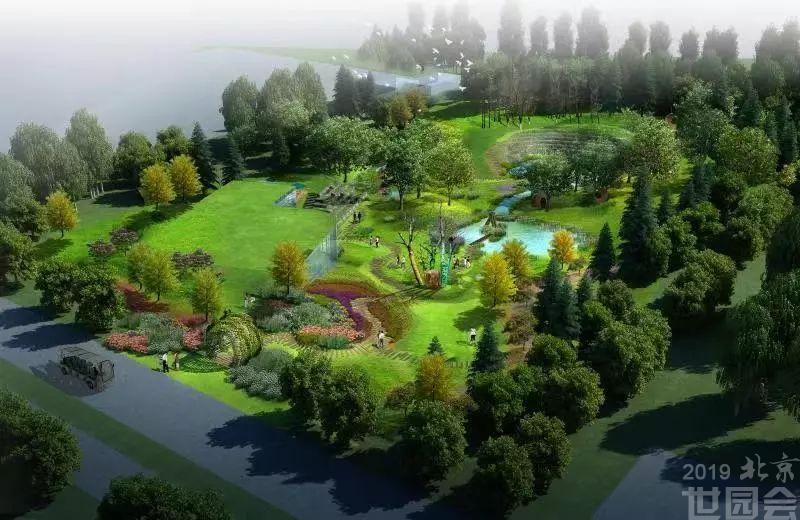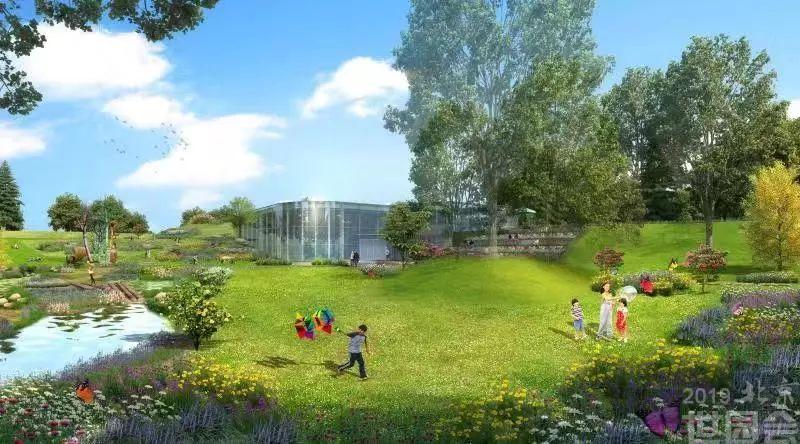An important kind of ecosystem in nature, grasslands compose a shared community of living beings with mountains, rivers, forests, farmlands and lakes.
The garden of Inner Mongolia M•Grass Ecological Environment (Group) Co., Ltd. at Beijing Expo 2019, with grass as the core foundation of the natural environment comprised of mountains, rivers, forests, farmlands, lakes and grasslands, is themed on “Integrating Man and Nature and Building a Shared Community of Living Beings” and aims to explore the humankind’s relationships with animals, plants and microorganisms.
With the mountainous topography of Yanqing District as its spatial layout, the garden serves as a “habitat” for seven ecologically typical animals selected from 600 species of indigenous animals in Beijing, forming a comparatively complete ecosystem. Moreover, it abandons the people-centered design principle, but adopts a strategy to define respective spheres of activity for people and animals, so as to achieve maximal integration and harmonious coexistence between man and nature. In this way, it actualizes the concept that “mountains, rivers, forests, farmlands, lakes and grasslands together compose a shared community of living beings.”

The entire garden is divided into three parts, with themes on human’s understanding of nature, harmonious coexistence between man and nature, and animal and plant preservation, respectively.
The first part, with the main structure as the core, interprets the relations between architecture and nature in an “invisible” way. All buildings are hidden in and integrated with terrains and vegetations in the garden. Displayed in the exhibition hall include ecological big data, germplasm resources and an ecological lecture. Through careful observation and personal experience, visitors can feel the texture of life and observe changes in nature, which looks different with the passage of each second. In this process, they can understand and retrospect on nature.

The second part demonstrates the core concept that “mountains, rivers, forests, farmlands, lakes and grasslands together compose a shared community of living beings” through imitating mountain restoration, sponge cities, rivers, wetlands, forests, flower fields, lakes and grasslands. This section creates a living environment for the seven animals dwelling in the garden through plant selection, community design, habitat creation, and bird’s nest imitation, thus creating an ecological space in which man harmoniously coexists with animals and plants. In this way, it fosters public awareness for ecological protection, inspires the public to love nature and life, and disseminates the scientific concept of green development.
The third part focuses on the restoration of primitive mixed forests, uneven-aged forests and multi-storied forests, with an aim to create a habitat for animals that simulate the natural environment. Its vegetation species come from rainfed plant communities that need little irrigation and have a strong capacity of adapting to the environment. Through views of withered trees, less human participation but more natural preservation, this section forms quasi-natural energy-conserving landscapes and provides an ideal habitat for animals dwelling there.
The designer of the M•Grass Garden hopes to create a natural ecosystem featuring greater biodiversity by artificial means, in which man can maintain a balanced relationship with animals and plants. It also hopes to provide the most true and simple natural environment in which visitors can automatically discover and feel the most primitive beauty of nature, thus inspiring them to respect and protect nature.